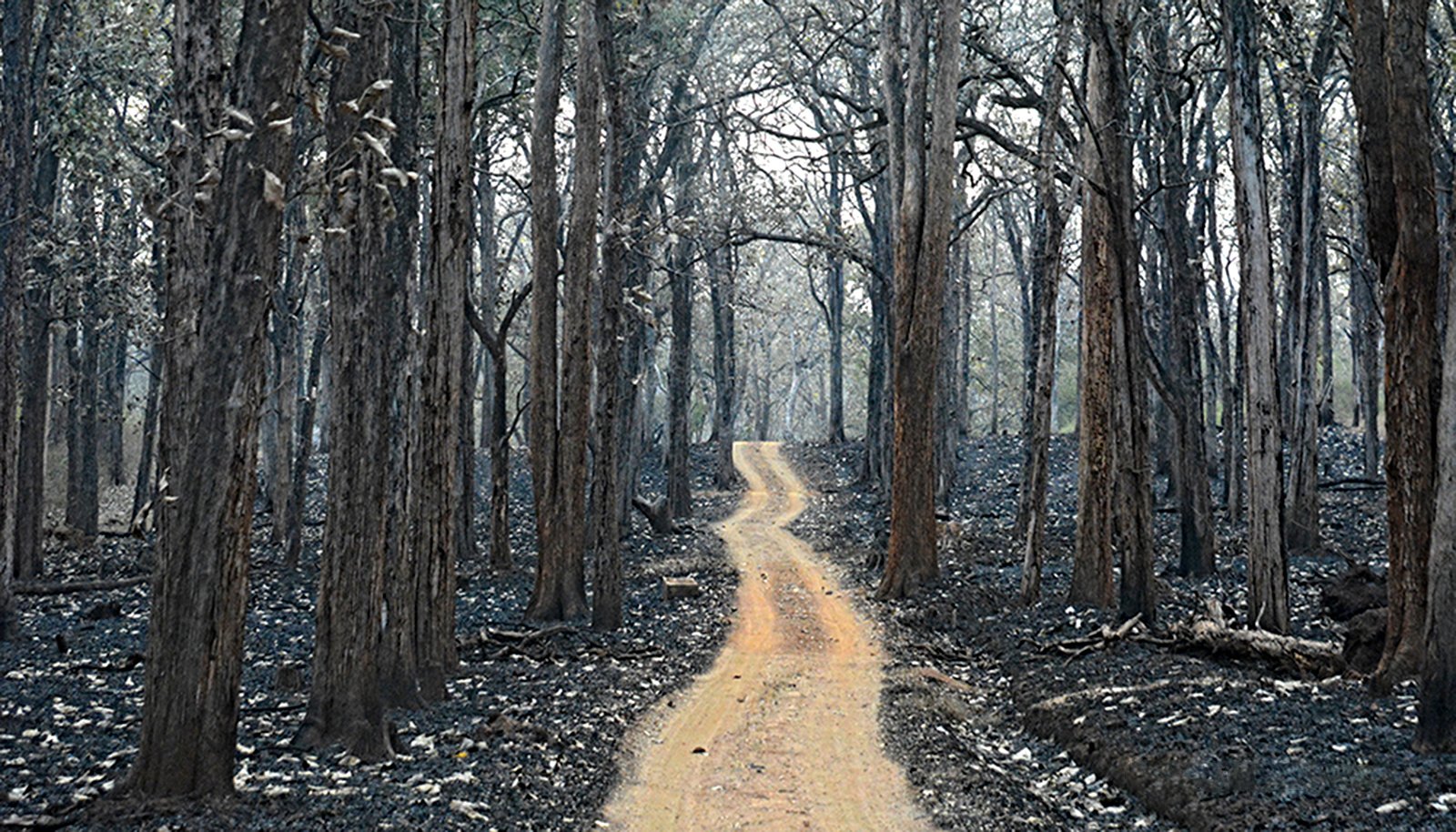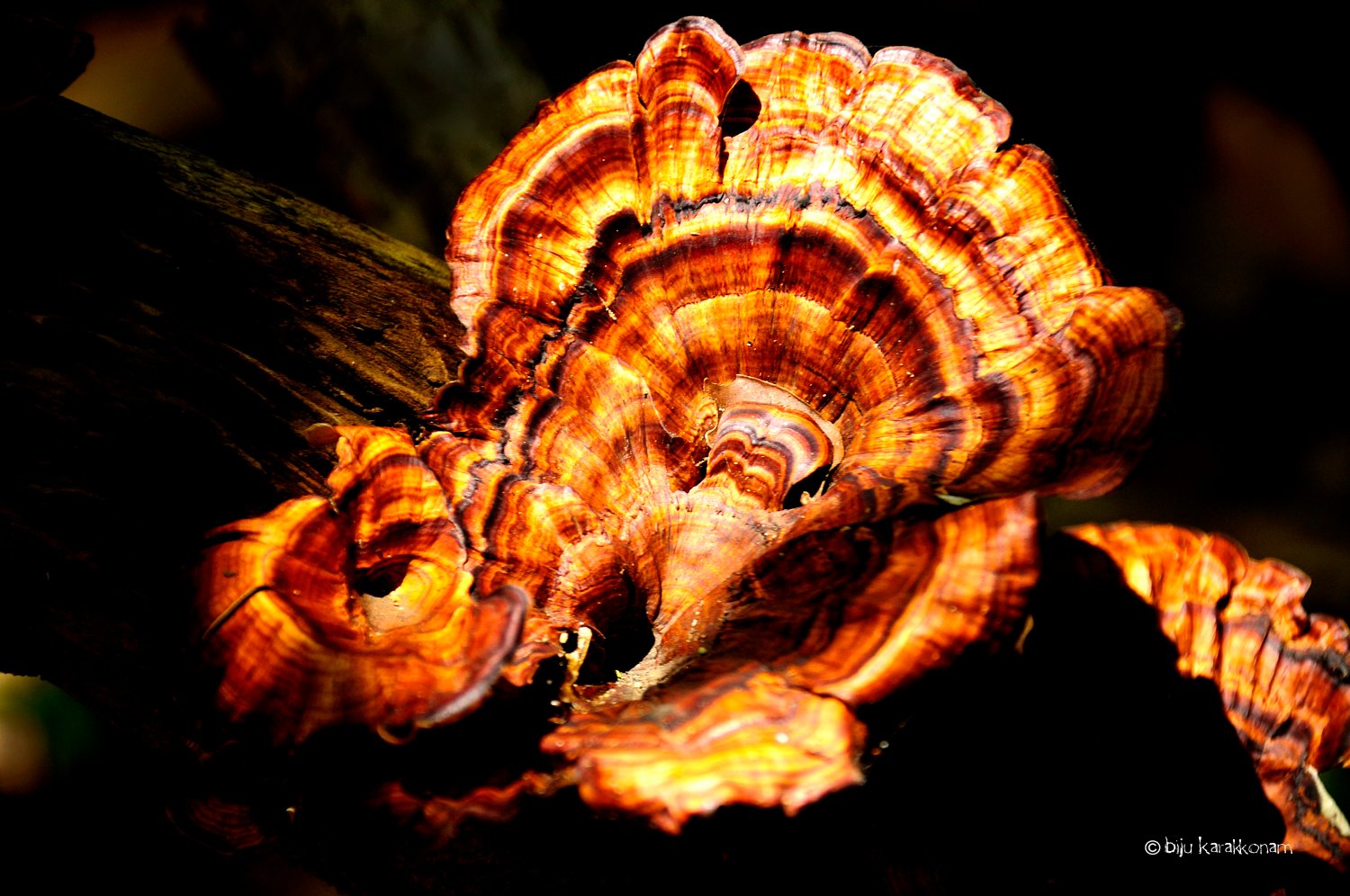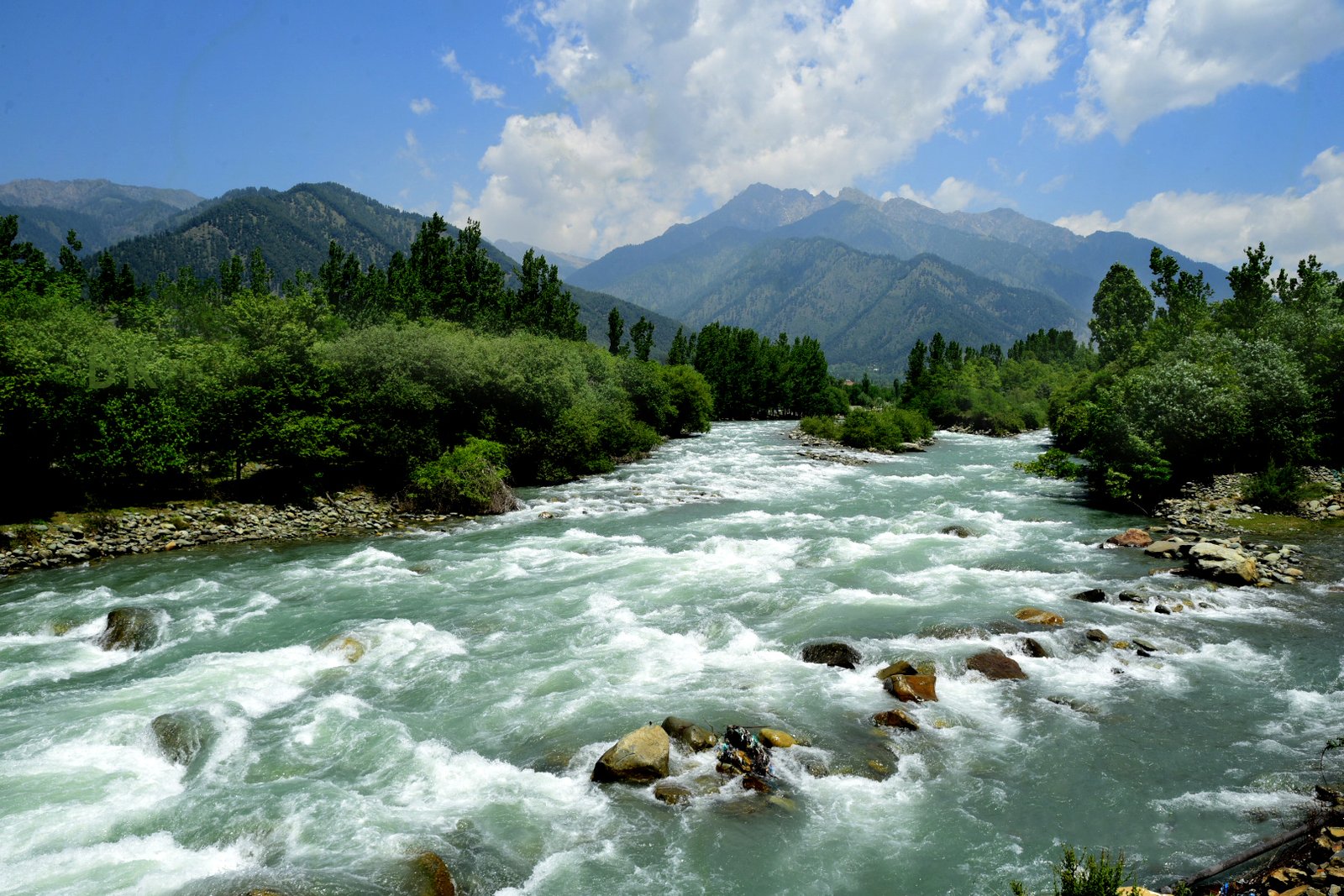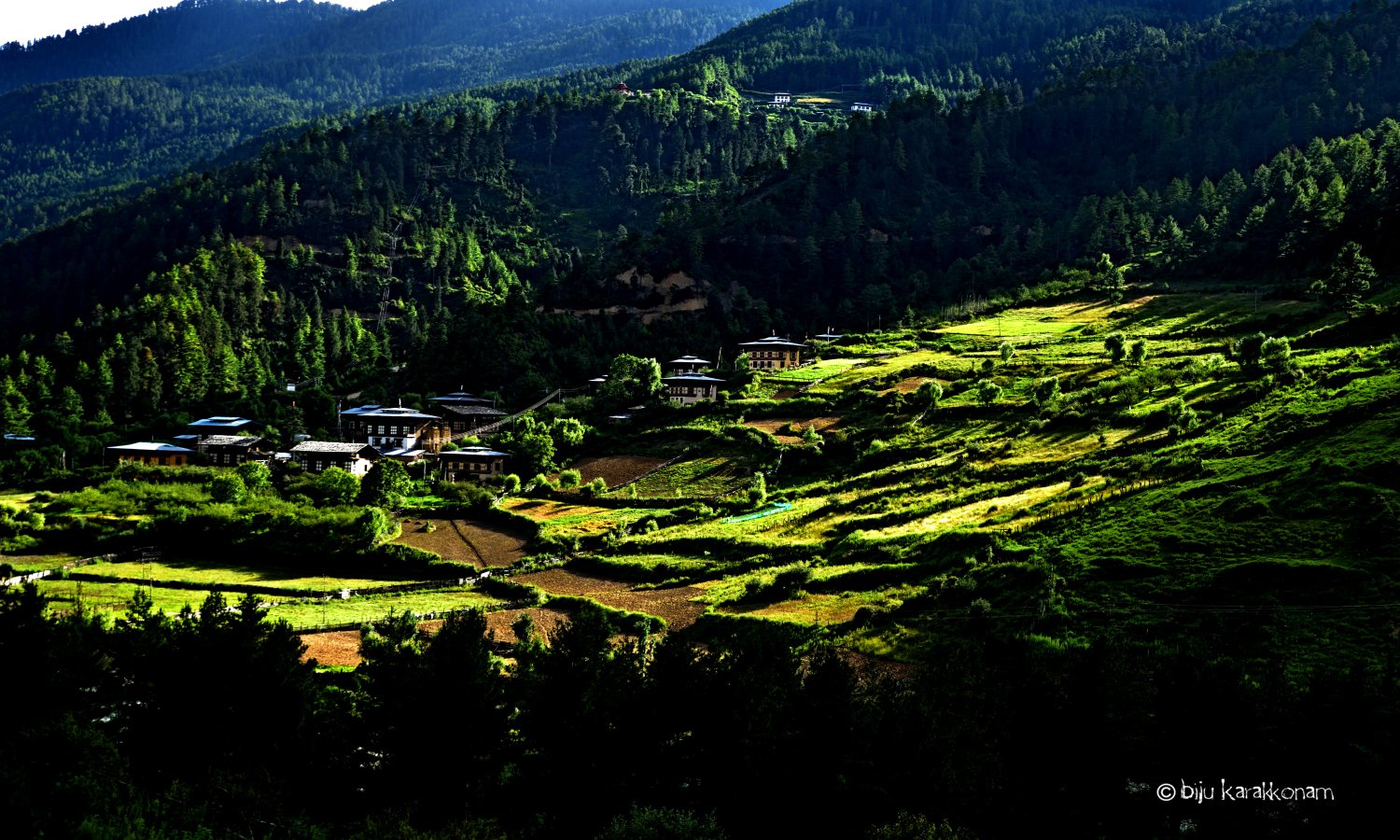Connecting Man And Nature With Photography
Text by Namitha
Ever since his childhood, Biju Karakkonam, hailing from Karakonam, in the capital district of Thiruvananthapuram in Kerala, had a desire to travel and see places. While studying for his graduation, due to his impoverished background, he had to work along with his studies, to supplement his income. He started his life as an insurance agent with LIC and also took tuitions for children, while studying in College. At the same time, he also started traveling with his friends, and would photograph the sights & sceneries, that he came upon, while traveling. Initially, he took photos with a camera borrowed from a friend and later invested in his own auto focus film camera.
Biju’s interest in photography has been greatly influenced by travel. Photography became a passion as beautiful views were captured in prints, which inspired him to take up photography as a profession. The work became more enjoyable when it became a passion and a profession. According to him: “The desire to see when the camera captures the sights that enter the mind, results in some good moments becoming pictures to keep forever.”

Almost twenty years after he began his photography career, Karnataka Open University announced the launch of India's first Master of Fine Arts (MFA) degree in photography. Six people qualified for admission that year. “Four of them, including me, were from Kerala.Thus, I became one of the five peoplegraphy degree in India”, said Biju.
"I take the same picture twice, first with my heart then camera."
His career is a mix of photography and videography. To his credit he has produced more than 100 documentaries for various government and non- government organizations in India. It also includes a documentary made for UNICEF about Poomala Tribal School. He has worked as an independent cameraman, for two schedules of Malayalam film Kalam directed by Suraj Sreedhar and as a cameraman in a short film directed by Suraj for Sarva Shiksha Abhiyan Adimali BRC. Here are excerpts from an interview he gave to Kerala Travel Explorer.


What inspires you most in photography, like nature, wildlife, travel photography etc?
As a photographer, I get an indescribable sense of satisfaction at the end of each sight-seeing trip. New views bring new life lessons and these experiences are what inspire me to love photography so much. Each picture and each historical moment can never be recreated. Only a photographer can freeze the historical moment with a single click.
"Photographers are the history makers, because every picture is a moment which has gone forever and cannot be re-shot."
It is just a myth that you have to travel a lot to see the sights. All you have to do is have the desire to see the sights around. There are many sights around us, as there are many lives too, and we just need the mind to see them. Being able to enjoy sights is also an art. In today's digital age, if children are not taken to the real world, they will not reach the right destination.
The experiences of each trip have given me the opportunity to make many changes in my life journey. The changes that each view has made in the outlook of life are not small. Even traveling alone makes us understand the truth that no one is really alone in life. Although traveling requires a lot of money, my travels are often accidental. Very close friends and never met
friends have often helped.
Twenty-five years have passed since the beginning of small and big journeys. I have made many trips alone, and with many with friends too. Lakhs of kilometers have been travelled, but there are still many places still to visit. I have travelled by bus, car, bike, ship, plane, bullock cart, horse cart and Lorries. A bike ride alone in the pouring rain on some nights is a different feeling. The memories of the adventurous trip that five of us made 20 years ago on three bikes from Thekkady to Vadasserikkara via Vandiperiyar and Moozhiyar still remain in fresh my mind. For quite some time now, I have been traveling with them for travel photography workshops for those interested in learning photography.
Every journey is like a textbook. The life lessons they impart are immense. The self-knowledge it gives is often a milestone on the path of life. Each of the characters we meet along the way are lessons to understand at what stages of life we all stand.
Photography industry is offbeat & unconventional, what are the challenges there?
I mainly divide photography into three parts. One is point and shoot photography. Shooting the sights with cameras and mobile phones. Most people don't care about the rules of photography or the aesthetics here.They click showing their eyes.
The second category is documentation photography where the facts are captured and where the emphasis is on the subjects. It is the duty of the photographer to convey them accurately and honestly to the viewer. Many categories like news photography, archaeological, industrial and product photography come in this category.
The last category is fine arts photography. Here a photographer captures not what his eyes see, but what is imprinted in his heart, is what his camera captures. The views of the photographer can be exposed that way. This is where photography becomes an art.
The photography industry is booming in a big way today. Technology has also made a lot of progress today. But with the advent of digital cameras, the price of cameras has increased dramatically. New cameras from the same company coming out with minor changes can be a big shock to professional photographers, making it very difficult to recoup their
investment.
"A photograph captures a bygone moment in time which is impossible to be reproduced and which can create history. It can transfer emotions through generations, it can transfer knowledge through time, it can change cultures or it can create revolutions."
In wedding photography, the trend of changing new cameras every year has slowed down a bit today. The novelty of bargain cameras wears off pretty quickly. Because when its next model arrives with some changes, many are forced to go for the new one. After a certain point, many photographers realize that it is not wise to spend money like this. It does not mean that we should not accept the change in technology according to time. The advantage is to buy the camera and other related accessories wisely according to our needs.
A hobbyist photographer doesn't need to buy a camera like a professional wedding photographer. Similarly, wedding photographers do not need to buy the cameras that professionals use for advertising. Even people who do blogs on YouTube and Facebook often buy expensive cameras. This does not mean that others cannot buy it. But, it is better to buy cameras that fit for our needs.

"Fine arts are considered as seven sisters named as, Music, Sculpture, Literature, Drama, Architecture & Cinema. However, in this digital age, another fine art is to be considered. Today all seven fine art forms depend on photography for promotion, communication, documentation and survival. Hence, Photography should be called the eighth Fine Art."
Photography should be considered to be the eighth fine art to be added along with the seven fine arts of painting, sculpture, drama, music, architecture, literature, and cinema. Photography is the most important art in this period. All other arts exist today and are propagated with the help of the art of photography. So the time has come to add photography as the eighth fine art of the world. Therefore, it is my strong opinion that photography should be recognized as the eighth fine art in the world.
As a freelance photographer, how do you balance commercial requirements and your independent thinking?
As I have told you, that I have started photography as a hobby and later it turned into a livelihood. As the passion turned into a profession, I also enjoy doing commercial photography. Seeing photography as an art, I often try to see those views from a different angle.
I try to make the art of photography a means of connecting between man and nature, even as the medium of photography becomes a means of livelihood. Traveling always helps to refresh the man that I am.
"A man who doesn't travel is like the river that has stopped flowing. If its water is to be crystal clear like tears the river should keep flowing continuously."
When I came back after many years to places that I had once been to, the changes I saw in nature hurt me a lot, as am someone who loves nature a lot. The depth of the wound inflicted on the mind by the sight of the devastation caused by human intervention in nature was immense.
Since 2006, nature awareness photography exhibitions, nature trips and camps have been conducted to remind people of the need to preserve nature and biodiversity for us and our future generations. In the last fifteen years, 80 photography exhibitions have been organized in and outside Kerala. The older generation could often understand the apparent lack of interest in such activities. All of them are in a race to achieve something in life.
Realizing the truth that such messages can be spread in the society only by reaching out to the children, it has been decided to focus more on such programmes. Along with the exchange of ideas with children, the activities to bring an idea of BET for a better world to the society have been implemented in collaboration with an NGO called Child Empowerment
Trust. B - Butterfly's and Bees, E - Elephant and T - Tiger in the concept of BET for Better World and Better Life. BET is just a symbol. BET is just a word that represents all living things. The idea that society as a whole can come together to make a bet. Good land, good air, good food, and a bet for the survival of all living things on earth and future generations.
In this era when people are tired of hearing the news of war, terror and evil, my exhibitions are organized to highlight the idea of BET for a better world as part of the idea that the whole world should come together on the path of love and mutual cooperation. Nature is the mother of all arts. For me, photography is also an art that connects nature and man. There is a great
need to train people, especially children, to enjoy the arts. One of my goals is to bring the art of photography to children. Because observation skills can benefit children a lot. Art can stimulate children's creativity.

Observation and creativity is an activity that can greatly aid learning. The more popular art becomes, the more peace and harmony the society will have. An artist, who has a mind to enjoy art, cannot walk with the politics of violence, egoism, cutting and chopping in mind. An artist should always be on the side of good and truth. He must never wear the garment of a slave.
Today, the puppet groups of artists wearing such shirts and jumping on someone's string is the way to the destruction of art. True art and artists are reborn only when the art of time reaches perfection and reaches the hearts of the people. Then only art becomes immortal.
What factors do you consider as most important for photography?
Photography is an art form that helps us capture the rare moments that many of us witness in our lives forever and preserve them for immortal memories. So, it requires a creative mind and a lot of imagination. A good photographer must be able to look at something ordinary or unusual, interpret what he sees, and find different ways to translate those interpretations into beautiful and meaningful photos. Knowing how to compose a scene beautifully is very important for a photographer. Every picture is worth ten thousand words. Every image should have the ability to tell a story. The word photography itself means painting with light. A photographer must know how to properly manipulate shadow and light. Where the subject should be placed within a frame depends on the photographer's vision of how to balance the frame. The beauty of an image will vary depending on how each photographer handles these elements.
The most essential thing a photographer needs to capture good pictures is the mind to wait for a right click. While taking pictures of wild animals, you should understand about them and their behaviors, just like when you take pictures of humans, you should understand their nature and behavior. Every person reacts differently.
Above all this, the quality required for a good photographer is passion for photography. So, when you're trying to take the best photos possible, focus on creativity. The technical side of photography is always important, but all technical decisions are creative. Every photographer should remember that each time you click the shutter, a story could be born from the decisions you make.

What kind of research do you perform for a photography project /photoshoot?
Every photography journey and project is different. Because each photo will be a reflection of that moment, the light there at that time. Only in som places like modeling photography, wedding photography, product photography, we have the light control system under our control. In nature photography and wildlife photography, which I focus more on, the source of light is either the sun or the moon. In such situations, the lighting of our picture is not in our hands, so luck is a big factor in getting a good picture.
The first step in doing a photoshoot is deciding on a concept. Whether it's product photography, modeling photography, portrait photography, event photo session with family members, or children's photography, it's important to think about how to make it different. Next, decide on a suitable location, and prepare the camera lens and other accessories for each type of photography. It is only possible to get good shots if the models are brought to their comfort zone and the atmosphere is prepared for it.
When visiting a new place to take pictures of nature, you need to do some research about the environment and the weather. Sunrise and sunsets are my favorite times. After 5:30 in the morning and 5:30 in the evening, I look for a good frame and wait there. Clouds and lights on the western horizon in the evening often offer good moments for me to look forward to.
Which is your most favourite work and tell us the story behind it?
It cannot be said that it is a most favorite work. Because for me, each work is different and about many experiences. The last short film I did was a different experience.
It was shot entirely in Kurathikkudi tribal village near Mankulam in Idukki district. I was invited as a guest faculty at a five-day camp conducted by Adimali BRC under the auspices of Sarva Shiksha Abhiyan Kerala for tribal children after the second phase of covid, at the request of Murali Mash, who was a teacher in a school up to grade 5 there. Children there were not going to school for a year and a half due to covid. Without internet or mobile connectivity, the children there did not have access to online education like the children in the cities. The study camp was conducted by the local community to wake them up and bring them back to education. Making a short film on a mobile was part of the curriculum of the five-day camp. I took my friend Sooraj along with me because I was told that I would need to make a short film for the children there in a professional manner.
"I am not the best, I am not one of the best, But every time I will do my best."
The children were selected from the children who participated in the camp and their parents were made into storyboards by the teacher Murali Sir’s first hand experience of twenty-five years wandering as a sole teacher in Idamalakudi. The teachers themselves composed the music and sang it as a single song and included it in this film. A small film was born in very few days when Shamir Sir of BRC and other teachers, non-teachers and residents of Kuratikudi came together. Living with them for ten to twelve days was an unforgettable experience.
The shooting would start every day before 6:30 in the morning and by the evening, we would leave all the tools at the Anganwadi where we stayed and go to the river that originates from Kurathimala called Moothasseri Mudi and take a dip in the cold water. At night, the surroundings would be dark, and on some days the sky would be blue. The sight of tens of thousands of stars twinkling, the memories of lying in the river flowing through the rocks, are once in a lifetime experience.
Which equipment are you using now? How about your post processing work? Which software do you use?
The first camera to own was Minolta's auto focus film camera. The first digital camera to buy was the Nikon D70, and several generations later, it's Nikon's own D750. Adobe's Photoshop is what I mostly use for photo editing.
What advice do you have for the youngsters who would like to step into this profession?
Today everyone is a photographer and even a mobile phone helps in taking quality photos than a good average camera. Therefore, many people think that photography is not too big to learn. But photography is an ocean, wide field of knowledge with endless possibilities in the field of photography today. Basic knowledge of photography is essential.
Good pictures can only be taken if there is a desire to see good sights. First you have to get an image in your mind and then you have to capture it in the camera. Apart from that, you should get rid of the thoughts that you can only cut the required part after bringing the clicked picture to the computer. Make the most of opportunities to find good piles. Don' try to capture the good pictures you see with your camera. Download them directly to your mind. Only then can we try to think and copy a better frame in such situations.
"The beauty of photography is not in what you see, its art lies in your dreams."
The best camera is the one in your hand right now. The camera did not take the best photos. Every frame is judged by the eyes behind the camera.
Try different areas of photography. For example, you can focus on portrait, wedding, sports or landscape photography. From that find your area of expertise and focus more on it.
Build your complete portfolio. You need a portfolio to showcase your workto others. Use photographs from multiple shoots with different subjects to highlight the range of your skills.
Develop your photography skills. There is no "right way" or "wrong way" to become a great photographer. You may find that you can teach yourself photography from books and experiments, or you may want to learn from other professionals. There is a lot to learn about photography and even the little knowledge is often invaluable. Always try to be updated. When you think I know everything, then your growth will stop. Your growth begins when you try to understand everything with the curiosity of a small child.
The equipment you need will depend on the type of photography you do. But in different situations you may need one or two camera bodies and a variety of lenses. You also need a quality photo editing software. Try to buy only the equipment you need. Have a clear understanding of the camera in your hand. Work towards a goal in life.








